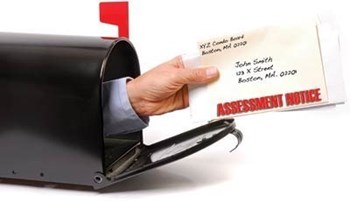
Looking at the balance in an association’s reserve account, a homeowner could easily feel complacent. After all, a quarter-million dollars is a lot of money.
Maybe—or maybe not. If the condominium comprises 200 units, is nearing its 20th anniversary, is still sporting its original roofs, decks and siding—and hasn’t done much road maintenance in those two decades, that cash could be just a drop in the bucket.
With the economy continuing to lag, foreclosures still plaguing many communities and homeowners struggling to make payments, the very thought of proposing a special assessment to cover needed repairs can strike terror into the hearts of condominium board members. But at the same time, many boards are hesitant to even nudge up monthly fees in order to build a healthy reserve—a move that in the long term could make a need for those dreaded special assessments less likely.
In a recent dialogue, three members of New England Condominium'seditorial advisory board discussed the role of the board and management in creating a format and frame of reference for the association's reserve account that makes sense to all homeowners. Just as current discussions of the federal budget, with the word “trillion” being tossed around daily, tend to make eyes glaze over, condominium statements that show large balances in the reserve account can result in homeowner complacency. Looking at the reserve fund as a representation of the long-term needs of each home, they say, would offer a more reasonable perspective.
A Long-Term Approach
“My mantra for close to 20 years has been that you have to put away a thousand dollars per household per year,” says Ralph Noblin, PE, president of Noblin & Associates, Consulting Engineers, in Bridgewater, Massachusetts. It was, Noblin acknowledges, a tough sell in the 1980s, when homeowners “didn’t picture themselves being in the same place when these projects would come due.” It’s still a tough sell today, when homeowners are being squeezed by rising prices, job losses, and the challenges of the overall economy. But the need for a healthy reserve is only going to increase as the buildings age.
For years, homeowners—and board members —faced with the prospect of increasing condo fees to more fully fund the reserve account figured that major repairs would be someone else’s problem. First-time buyers expected to be moving up and out in a short time, Noblin says, while those older often said—only half in jest—that they’d be “gone” before it was time to replace the roof.
“It takes a while to get everybody to understand that these are your homes, and you have to plan for the costs you know are going to come,” he says.
The battle over proper reserve contributions is an age-old story, agrees Bob Burns, PE, whose New Hampshire-based engineering firm has done countless reserve studies over the years—and has seen many of them simply gathering dust on a shelf until problems arise. “What we see a lot is simply a matter of deferred maintenance,” he says. “People have a limited understanding of failure modes, of how long it will be before things start falling apart.”
But what has changed in recent years, he says, “is the ability of people to pay” even a reasonable fee for the reserve. The current economic climate makes boards more nervous than ever about trying to boost reserves to a more effective level.
In his initial meetings with a board regarding a reserve study, Burns asks what the current level of contribution is—a move that almost inevitably points to an anticipated shortfall relative to the buildings’ needs. “It gets us all on the same page pretty quickly,” he says. “We try to make it as easy on the unit owner as possible, wondering what it does to their budget. But we’re professionally bound to tell the client what they should do—not what you think they would like to hear.”
“You’ve got to look at the math,” insists David J. Levy, president of Sterling Services in Holliston, Massachusetts. Surprisingly, it’s a view that even many long-term board members have not considered, even in light of reserve studies showing anticipated repair or replacement needs and their costs.
Levy relates an exchange he had with a board after his firm had put in a proposal to become the management company for the small, upscale townhouse property. “The board chair was bragging about having ‘a lot of money’ in reserves,” Levy recalls. “They had around $60,000 and 40 units. The property was ten or 12 years old.
“I said, in essence, ‘I have learned that most people can’t fully appreciate the federal debt and federal annual budget deficit, but if you put the numbers on a per-person level, most people get the numbers very quickly. So if my math is right, you have around $1,500 per family pre-saved after 10 to 12 years. Most of the condo’s key assets last 20 to 25 years, so these assets are about half used up.
An Eye-Opening Breakdown
“’What do you think it costs, per family, for a new roof? Siding? Deck? Driveway? Your portion of the internal roads? Do you think that you can do all of these for a total of $3,000 per family?’” Some board members, Levy says, didn’t like that news. But others agreed that the items he listed must total “anywhere from $10,000 to $30,000 per family,” but the reserves were only $1,500 at the half-way point. “Not good. Not good at all,” he says.
The point, he adds, was not to “throw negative eggs” at the association board for not having built a larger reserve fund, but to point out the reality of the situation. “It’s a dilemma for boards,” says Levy, who has been in the condominium management field for decades. “People don’t want to pay for the future. It’s the American mindset.
“I tell trustees that if they want to be liked, don’t run for the board,” he quips. Because of the nature of board elections and the natural progression of board members moving in and out of office—or even in and out of the community—many trustees work within a time frame of two to five years. “I’m trying to teach them to make decisions based on 20 to 50 years,” Levy says. “It’s not going to be easy. You have to change the culture of the community. I don’t want to manage a property based on what’s good for two to five years.” Changing that community mindset, he admits, can take two to three years—and it can take up to 10 years to change a community’s financial position. Reserve contributions can’t skyrocket all at once; boards usually need to inch the fees up incrementally to avoid sticker shock. And homeowners really need to take a long-term view when considering their association’s leadership.
“People want more services, and they want to pay less,” he admits. “If you elect trustees that way, the next couple of years will be fantastic, but your future is really dim.” Part of the manager’s job, he suggests, is to provide boards with the moral and intellectual support to change the fiscal picture, even when their decisions are of necessity going to be unpopular.
“People will challenge you, but be honest,” Levy tells homeowners. “How long is a deck going to last? Say it’s 20, 25 years. How many months is that? So, we’re going to take out 20 bucks a month to pay for that deck. If Mrs. Smith is on a fixed income and moves into the community next year, is it reasonable for her to have to pay (the entire cost) of a new deck because you’ve been skating all these years?” Homeowners are too often lulled into complacency by what seems like a large sum in the reserve account. Levy recommends that boards always frame those reserves in terms of each homeowner’s share of the account—usually an eye-opening statement.
The association professionals remind homeowners that the manager has a moral—and legal—obligation to know the industry’s best practices, and to have a long-term orientation for the good of the community. “I fight with my clients relentlessly,” Levy admits. “The choice isn’t between low fees and high fees; that’s a false choice,” he says.
Noblin and Levy note that too often, buyers were “sold” on a property because of, among other things, the low condo fee put in place by the original developer. “It’s a shame that almost all older condominiums are having to play catch-up, big time, due to their starting point of ‘low monthly payments.’ Nearly every condo sale ad from the eighties had that language,” Noblin says, “sometimes resulting in reserve contributions of as little as $100 per unit, per year.
“If the new complexes start out with reserve contributions in the $1,000 per unit range—that’s in today’s dollars; it should rise in future years — they should be okay. Our dilemma is having to explain the ‘fairness’ of current owners having to make up for years of shortfalls by others,” he says. Associations can take a step toward avoiding devastating special assessments—which can run into thousands, or even tens of thousands of dollars—by “bumping up” fees a little at a time. “I’ve been to meetings where people complain about condo fee increases of $5 or $10 a month,” Noblin laments. But association boards have a fiduciary responsibility to set reasonable fees.
Because of low reserve contributions over the years, Burns says, delay has become the by-word for many associations. “We see it all the time at sites we’ve done a reserve study for,” he says. In the course of the reserve study, boards can see the likely time span before physical components start falling apart. “But when we come back and look, did they follow our recommendations?” Burns asks. “Some projects are getting done, but often, the bigger projects get deferred.
“Associations will patch the roads, but how long can that go on? Do they understand what, eventually, the failure can be?” Burns’ engineering firm recently launched a new service called “Reserve Manager” that is designed to help associations see the “failure modes” of each component and allows them to play out “what if” scenarios with their property maintenance plans.
The bottom line, the experts say, is that a healthy reserve will allow the association to properly maintain the community’s physical assets—and each homeowner’s financial asset as well. “Realtors will tell you that you have about eight seconds for a buyer to form an opinion about a property,” Noblin says. “If the siding needs paint, the roof is worn, the roads are in bad shape, the decision is made before they step in your door.”
Pat Gale is associate editor of New England Condominium.






2 Comments
Leave a Comment